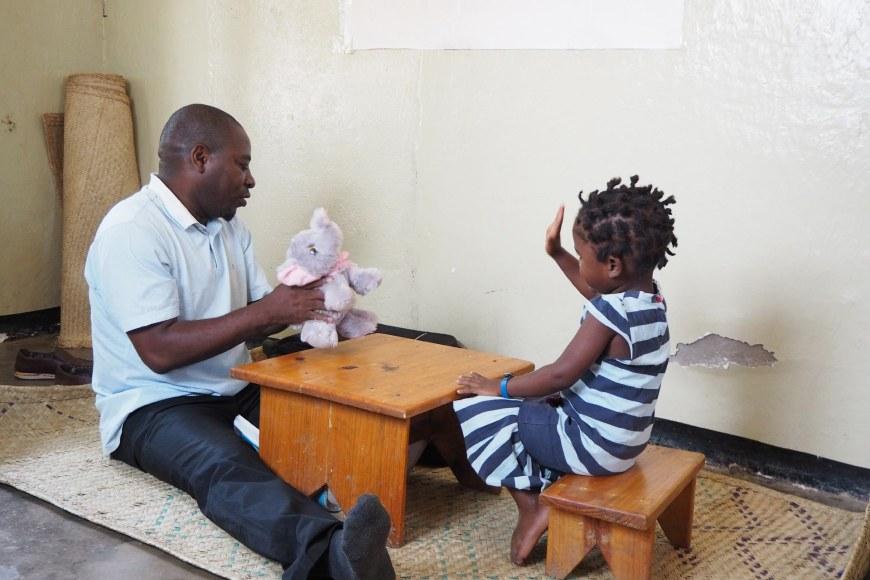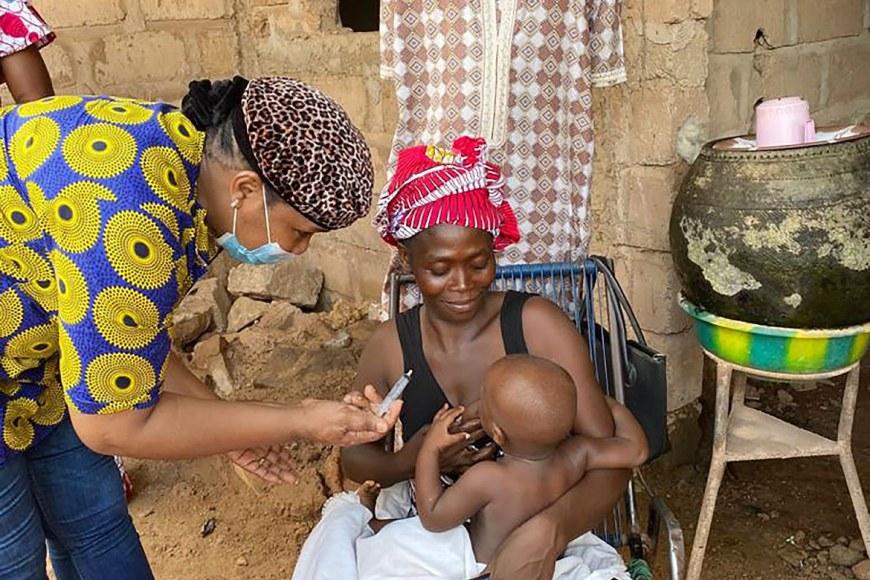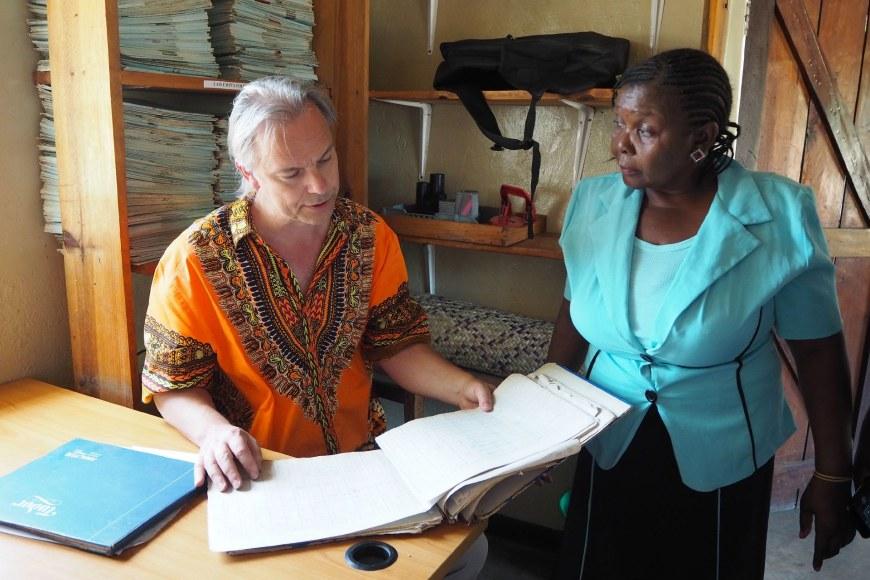Working for the health of the children

This article was originally published in Unit, the magazine of Tampere Universities.
When Per and Ulla Ashorn first moved to Malawi in south-eastern Africa in 1993, almost one in four children died in the country before reaching the age of five.
Now, the under-five mortality rate in Malawi is only about one-fifth of this, at five per cent.
“Development is slow, and it cannot be said that it was only us who did it, but we have done our fair share,” Per Ashorn says.
Per Ashorn is professor of paediatrics at Tampere University and director of the Tampere Center for Child Health Research. Docent Ulla Ashorn, Per’s wife, is a senior research fellow in the same Global Health Research Group. Together, they work to promote the health of children in the world’s least developed countries.
If you ask the Ashorns what the world’s biggest health problem is, they will not say cancer or cardiovascular disease. To them, the biggest problem is poverty.
“The most important requirement for good health is peace. If we could eradicate wars and poverty, people’s health would improve enormously,” Per Ashorn points out.
Second home in Malawi
Due to COVID-19, we are conducting this interview via Zoom, even though the Ashorns are currently in Tampere.
In a small town in Malawi, a little house awaits the Ashorns. This is where they live and conduct research with a team of about a dozen research assistants. There is also a car and a couple of suitcases of personal belongings, such as kitchen utensils and lamps in case of a power failure.
Why is Malawi the place where you want to return time after time?
“Malawi has become our second home because our research station and friends are there. And of course, the warmth of Africa and friendly people are also important,” Ulla Ashorn says.
However, perhaps the main reason is that the Ashorns already have a long research history in Malawi, which makes it easier to answer some of the research questions using population cohorts than to look for answers elsewhere.
“However, we have recently done research collaborations with research institutes in other African and Asian countries as well,” Per Ashorn adds.
Cultural differences and misconceptions
There are big and important scientific questions to be answered. The Ashorns’ tasks include solving them, but they must also overcome everyday snags and practical difficulties.
For example, at one point there was no petrol in Malawi for two years. The research station also lacked electricity at the time, but the biological samples still needed cold storage, meaning that petrol had to be procured in one way or another for the generator that produced electricity for the research station.

Smaller problems constantly occur: the bicycles of the research assistants must be repaired, cars break down and internet connections stop working. Cultural differences also cause some headaches.
“Quite often, there are moments when we think that this cannot be happening. The working methods, work culture and communication methods of different countries are so varied,” Ulla Ashorn says.
However, she also finds that different people from different backgrounds add spice to her work.
“Every day there are new insights that ‘oh well, that’s how people can think, and I didn't realise this on my own,’” Ulla Ashorn adds. At best, both parties learn something new.
Nutrition affects the brain
In Malawi, the Ashorns are conducting research on, among other things, how child malnutrition can be treated.
A follow-up study is about to begin with children approximately 10 years of age who in early childhood received food supplementation using a product that resembled peanut butter but was fortified with nutrients. The growth and development of the participants are now examined in a more detailed way using various development tests, such as electroencephalography (EEG). To this end, the Ashorns are taking an EEG device to Malawi.
More than five million children under the age of five still die each year.
Thus, one of the aims is to study whether the nutritional supplement has been beneficial for the neuro-cognitive development of the children.
“The same children will also be monitored closer into adulthood. We are interested in the entire lifespan – what kind of environment the children grow up in and how they will fare as adults," Ulla Ashorn says.
Several other child cohorts are also being followed up in Malawi. Most recently, a group of research participants aged about twenty years came in for a follow-up study. These data are currently being analysed.
Antibiotics for the infants of Mali
A larger project led by the Ashorns has just begun in Mali, West Africa.
This trial is aiming to assess if the high mortality in children under one year of age can be reduced by giving asymptomatic children an antibiotic called azithromycin. The American Bill & Melinda Gates Foundation is providing $20 million of research funding.
However, the Ashorns have not been able to get to Mali recently, nor will they for a while longer.
“First came COVID-19, then there was a military coup in Mali and next riots against France broke out. The safety situation is not stable, so we are not going there right now,” Per Ashorn says.

However, a local research organisation in Mali has been able to begin the study. The first doses of the antibiotic were administered to children in October.
The aim is to study approximately 110,000 babies in 830 Malian villages. Some participants receive azithromycin every three months, some twice a year, and some are given a placebo.
The Ashorns coordinate the research remotely over the phone and through virtual connections.
“Local families have welcomed the study and so far, there have not been many refusals,” Per Ashorn says.
If the results are good, azithromycin may be used more widely to reduce the high infant mortality. However, the potential disadvantages of using the medicine, such as the increase in antibiotic-resistant bacterial strains, will be closely monitored.
Relief for the corona epidemic
When the coronavirus became a global pandemic in the spring of 2020, the Bill & Melinda Gates Foundation wanted to help prevent the spread of the disease in Sub-Saharan Africa.
The project led by the Ashorns received an additional $1 million for research into the spread and impact of COVID-19 in Mali.
The funding has mainly been used to purchase diagnostic tests, digital thermometers, oxygen saturation measurement equipment and other devices, and to hire Malian staff.
“This was actually public health money disguised as research funding. The focus is that we support Mali’s health system in curbing the epidemic,” Per Ashorn says.
At the same time, the impact of the COVID-19 epidemic on health services in Mali will be studied, the exposure of healthcare workers to the virus will be assessed and the typical symptoms of the COVID-19 infection in patients with a suspected or confirmed infection will be analysed. A population sample will also be gathered in order to measure antibodies to the virus.
“In general, there have been significantly fewer infections in African countries than feared at the beginning of the epidemic. This may be partly due to a lack of testing, but it seems that so far the epidemic is playing out differently in Africa,” Per Ashorn points out.
Small vulnerable newborns
The Ashorns are also currently working to produce a series of scientific articles on the theme of the “Small Vulnerable Newborn” for the prestigious medical journal The Lancet.
The couple is responsible for writing one and coordinating all five articles due to be published in May 2022. The work is funded by the British Children’s Investment Fund Foundation.
Although child mortality has declined worldwide in recent decades, more than five million children under the age of five still die each year.
“About a half of infant deaths occur during the first month of life, and the number of these deaths has fallen more slowly than expected,” Ulla Ashorn says.

Infant mortality is typically associated with foetal growth failure or premature birth. About a quarter of all babies in the world are born underweight, premature, or too small for the duration of pregnancy.
The purpose of the series of articles in The Lancet is to provide a scientific basis for measures to reduce premature births and deaths caused by foetal growth failure.
“Although The Lancet's series of articles have scientific aims, they also seek to shape global policies, meaning that our series of articles can have a big impact on how deaths related to prematurity and intrauterine growth restriction can be reduced around the world,” Per Ashorn explains.
Dreaming of a week without a computer
The Ashorns usually spend more of the year abroad than at home in Tampere.
“I’ve said before that we spend four months in Finland, four months in Malawi and four months in airports,” Per Ashorn jokes.
However, 2020 turned out to be different.
Like other university employees, the Ashorns started to telecommute in spring. International conferences were replaced by video conferences and face-to-face meetings by endless correspondence via email.
“I dream of spending a week without a computer. Especially during the COVID-19 pandemic, when we have Zoom meetings from morning to night, you start feeling the strain,” Per Ashorn sighs.
In Malawi, video conferencing is less common due to the unreliable network connections. According to the Ashorns, everyday life is still the same as in Tampere: in the morning you wake up, in the evening you go to sleep and in between you work on your computer.
However, there are still some differences in everyday life. When rain and sleet fall in Finland, the Ashorns can watch the starry sky in the dark, warm evenings.
Per and Ulla Ashorn
Per Ashorn is a physician specialised in paediatric infectious diseases and a professor of paediatrics. He is the director of the Tampere Center for Child Health Research and leads its Global Health Research Group. He is also Chair of the Finnish Paediatric Society.
Ulla Ashorn is docent and university researcher in the same Global Health Research Group. Her background is in the social sciences, and she is researching social and health policy.
The Ashorns’ research focuses on maternal and child health in low-income countries in Sub-Saharan Africa. Their main research topics are maternal and childhood infections, premature births and childhood malnutrition.
They live in Pispala, Tampere, and a part of the year in Malawi. When the COVID-19 epidemic subsides, they will enjoy films and concerts in their free time.
Their adult son Mikael Ashorn is working for a UNICEF water, sanitation and hygiene project in Nepal.
Read more about the Tampere Center for Child Health Research: https://research.tuni.fi/tamcam-gh/
Author: Virpi Ekholm








